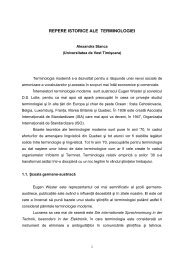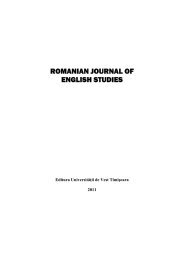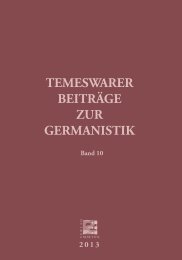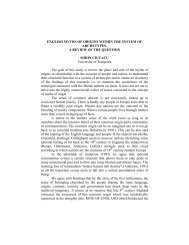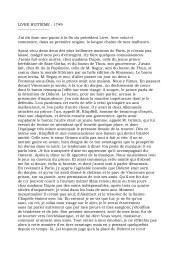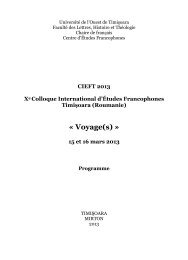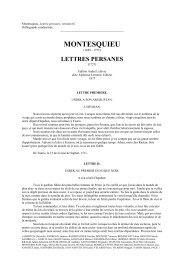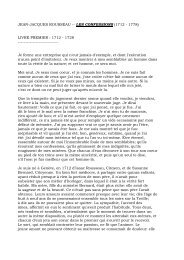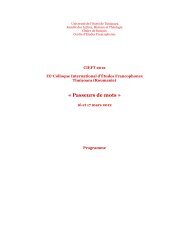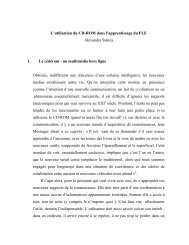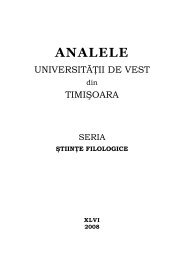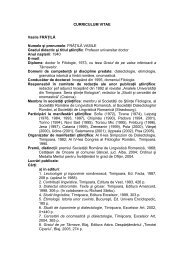TRANSLATION AND MEANING: A CULTURAL- COGNITIVE ...
TRANSLATION AND MEANING: A CULTURAL- COGNITIVE ...
TRANSLATION AND MEANING: A CULTURAL- COGNITIVE ...
Create successful ePaper yourself
Turn your PDF publications into a flip-book with our unique Google optimized e-Paper software.
of compounds of this type could be represented with the following<br />
generalization:<br />
[[[Adj1 ] [COORDINATION] [Adj2] ]ADJP] Nm<br />
The adjective elements of these lexical catenations are the frequently<br />
used monosyllabic adjectives, not necessarily conjoined by hyphens, such<br />
as: free-and-easy way, high-and-dry ports, rough and ready order, yellowand-blue<br />
cardigan, naughty-but-nice fox. Bauer (1983:207) tends to label<br />
these constructions dvandva, drawing a line of distinction between these and<br />
dvandva compounds. The results of corpus analysis conducted on a<br />
language sample of around one million English words show that one third of<br />
all APCs would be lexicalizations of coordinated phrase structures, be they<br />
adjective, noun or verb phrases. The greatest majority are coordinated by<br />
means of the conjunction and, and only 4 on the basis of or.<br />
2.1.2 Subordinated Adjective Phrases<br />
Adjective phrases of the modifier-head type can also be turned into<br />
lexemes, but we can accept them as phrase compounds only if the particle<br />
not is introduced. Generally, the structure would be represented like this:<br />
[[[Adv] [AdjP]]ADJP] Nm<br />
The phrasal position of intensifier can be occupied by the adverbials<br />
so, very, too, and others which normally perform these functions, as well as<br />
the negative particle not: all-too-powerful enemy, much-too-easy win, asyet-incomplete<br />
tests, not-yet-dry bench, not-so-nice gesture, etc. In English,<br />
there exist APCs with the first element adverbial and second element<br />
nominal which is used as the starting point for comparing characteristic<br />
qualities, such as near-continent-wide and the like.<br />
2.1.3 Adjective Phrases with Numeral Expressions<br />
Perhaps the commonest of types of PCs in adjectival positions is the<br />
one which is used to express certain characteristic features of the modified<br />
nouns in terms on age, weight, height, width, with the use of numerals and<br />
corresponding nominals for determining measure. The structure can be<br />
postulated as: [[[NumP] [Adj]]ADJP] Nm<br />
The examples include: four-inch-long worm, five-foot-tall man, four-footlong<br />
stick, twenty-seven-year-old girl, and very many other possible<br />
adjectivals of this pattern.<br />
2.1.4 Adjective Phrases with Complement<br />
Compounds of this type are formed on the basis of reducing<br />
adjectives together with their complements in the form of prepositional



